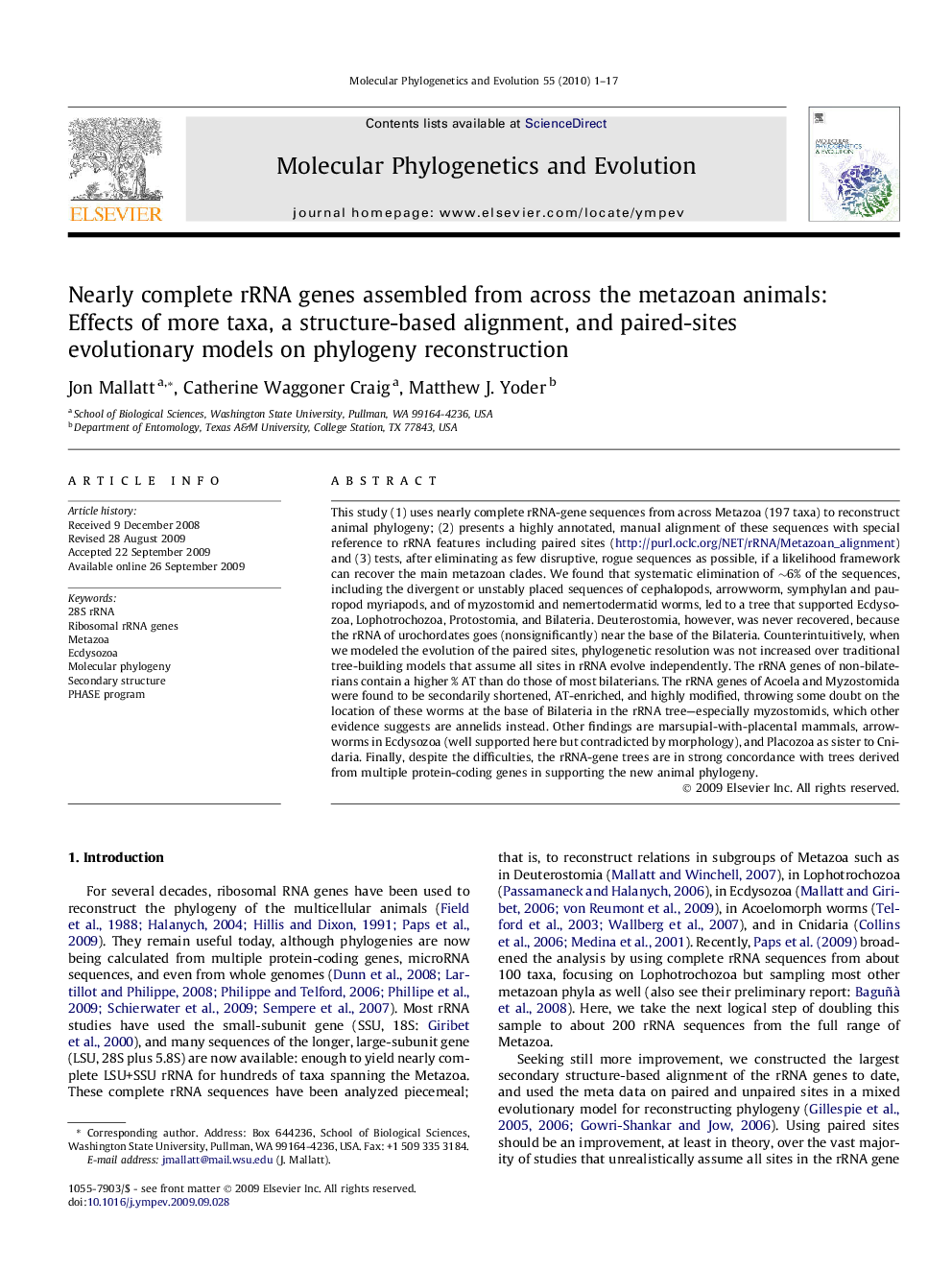| کد مقاله | کد نشریه | سال انتشار | مقاله انگلیسی | نسخه تمام متن |
|---|---|---|---|---|
| 2834826 | 1164324 | 2010 | 17 صفحه PDF | دانلود رایگان |

This study (1) uses nearly complete rRNA-gene sequences from across Metazoa (197 taxa) to reconstruct animal phylogeny; (2) presents a highly annotated, manual alignment of these sequences with special reference to rRNA features including paired sites (http://purl.oclc.org/NET/rRNA/Metazoan_alignment) and (3) tests, after eliminating as few disruptive, rogue sequences as possible, if a likelihood framework can recover the main metazoan clades. We found that systematic elimination of ∼6% of the sequences, including the divergent or unstably placed sequences of cephalopods, arrowworm, symphylan and pauropod myriapods, and of myzostomid and nemertodermatid worms, led to a tree that supported Ecdysozoa, Lophotrochozoa, Protostomia, and Bilateria. Deuterostomia, however, was never recovered, because the rRNA of urochordates goes (nonsignificantly) near the base of the Bilateria. Counterintuitively, when we modeled the evolution of the paired sites, phylogenetic resolution was not increased over traditional tree-building models that assume all sites in rRNA evolve independently. The rRNA genes of non-bilaterians contain a higher % AT than do those of most bilaterians. The rRNA genes of Acoela and Myzostomida were found to be secondarily shortened, AT-enriched, and highly modified, throwing some doubt on the location of these worms at the base of Bilateria in the rRNA tree—especially myzostomids, which other evidence suggests are annelids instead. Other findings are marsupial-with-placental mammals, arrowworms in Ecdysozoa (well supported here but contradicted by morphology), and Placozoa as sister to Cnidaria. Finally, despite the difficulties, the rRNA-gene trees are in strong concordance with trees derived from multiple protein-coding genes in supporting the new animal phylogeny.
Journal: Molecular Phylogenetics and Evolution - Volume 55, Issue 1, April 2010, Pages 1–17